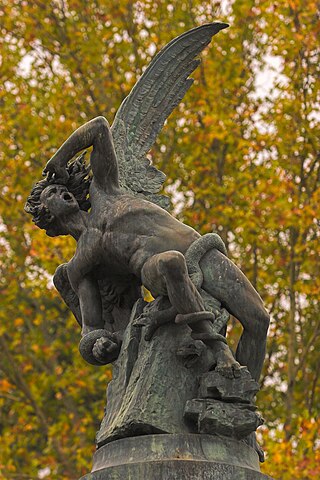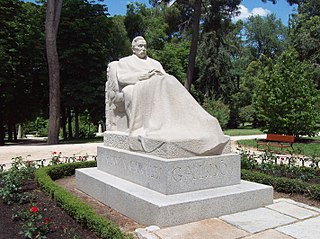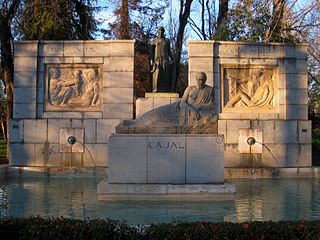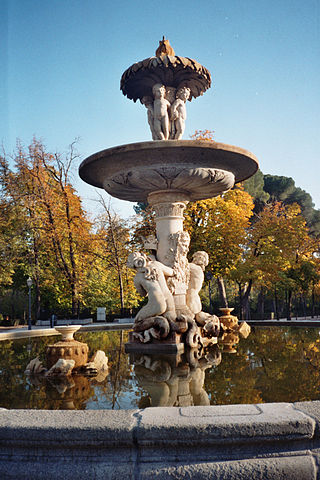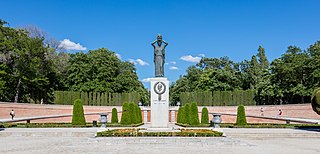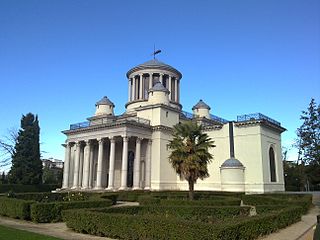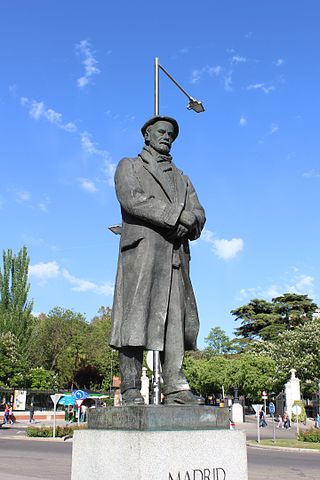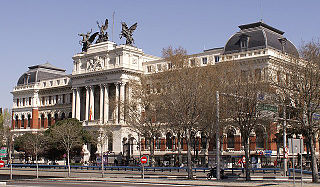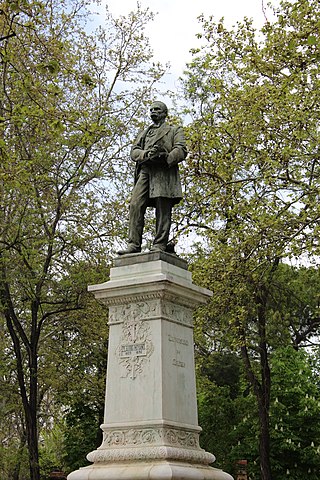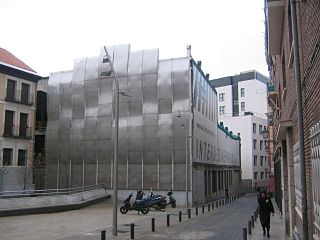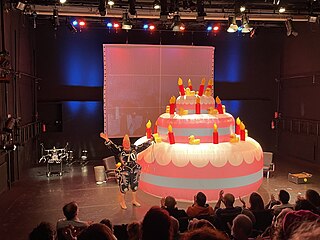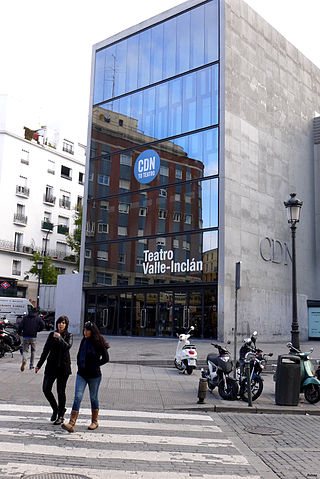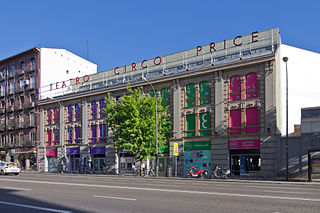Self-guided Sightseeing Tour #9 in Madrid, Spain
Legend
Guided Free Walking Tours
Book free guided walking tours in Madrid.
Guided Sightseeing Tours
Book guided sightseeing tours and activities in Madrid.
Tour Facts
7.5 km
176 m
Experience Madrid in Spain in a whole new way with our free self-guided sightseeing tour. This site not only offers you practical information and insider tips, but also a rich variety of activities and sights you shouldn't miss. Whether you love art and culture, want to explore historical sites or simply want to experience the vibrant atmosphere of a lively city - you'll find everything you need for your personal adventure here.
Activities in MadridIndividual Sights in MadridSight 1: Monumento a Dante
The Dante Monument is an urban monument in Madrid, Spain that honors the memory of the Italian writer Dante Alighieri (1265-1321) and is located in Dante's Gate in the Buen Retiro Gardens. It is a bronze mural made by the Italian artist Angelo Biancini (1911-1988) in 1968 and installed in May 1969.
Sight 2: Fuente del Ángel Caído
The Fuente del Ángel Caído is a fountain located in the Buen Retiro Park in Madrid, Spain.
Sight 3: Benito Pérez Galdós
Galdós or the Monument to Galdós is a sculpture in Madrid, Spain. A work by Victorio Macho, it is dedicated to Benito Pérez Galdós. It lies on the southern part of El Retiro.
Sight 4: Ramón de Campoamor
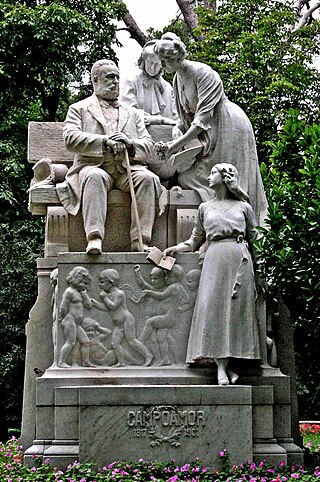
The Campoamor monument located in Madrid is located in the Retiro Park, on Fernán Núñez Avenue.
Sight 5: Crystal Palace
Get Ticket*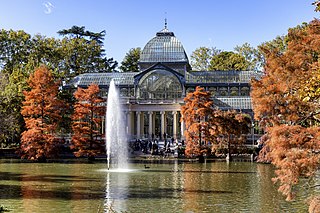
The Palacio de Cristal is a 19th-century conservatory located in the Buen Retiro Park in Madrid, Spain. It is currently used for art exhibitions.
Sight 6: Monumento a Santiago Ramón y Cajal
The Cajal Monument is a commemorative sculpture located in the Retiro Park in Madrid, Spain. The work of the sculptor Victorio Macho, it was inaugurated in 1926. It is dedicated to Santiago Ramón y Cajal.
Sight 7: Fuente de la Alcachofa
The Artichoke Fountain is a monumental fountain in Madrid (Spain) built in the last third of the eighteenth century and installed in front of the old Atocha Gate, from where it passed in 1880 to the Buen Retiro Gardens. There is also a bronze replica in Madrid that was placed in the Atocha roundabout in 1986.
Sight 8: Monumento a Jacinto Benavente
The Monument to Jacinto Benavente is a monument located in the city of Madrid, the work of the sculptor Victorio Macho and reminiscent of the playwright Jacinto Benavente. It is located in the Retiro Park.
Sight 9: Real Observatorio de Madrid
The Royal Observatory of Madrid is a historic observatory situated on a small hill next to the Buen Retiro Park in Madrid, Spain. It was founded in 1790 and has been engaged in continuous scientific activity since then. It is currently the seat of the Spanish National Observatory and an active research group in geophysics, both belonging to the National Geographic Institute.
Sight 10: Monumento a Pío Baroja
The monument to Pío Baroja is a Spanish sculpture dedicated to the writer Pío Baroja, which is located at the end of the Cuesta de Moyano, next to the intersection with Alfonso XII Street in Madrid. It is the work of the sculptor Federico Coullaut-Valera.
Sight 11: Palacio de Fomento
The Palace of Fomento, also known as the Ministry of Agriculture Building, is a nineteenth-century office building in Madrid, Spain. Designed by Ricardo Velázquez Bosco, and built between 1893 and 1897, it is on a prominent site opposite Atocha railway station.
Sight 12: Monumento a Claudio Moyano
The Monument to Claudio Moyano is an instance of public art in Madrid, Spain. Designed by Agustín Querol and located at the Plaza del Emperador Carlos V, it consists of a bronze statue of Claudio Moyano, a 19th century statesman noted for the authorship of the 1857 Law of Education, put on top of a tall stone pedestal.
Sight 13: Royal Botanical Garden of Madrid
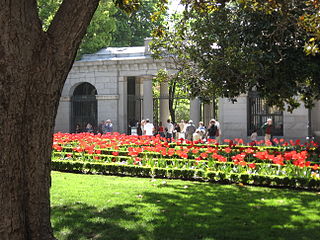
Real Jardín Botánico de Madrid is an 8 hectares botanical garden in Madrid (Spain). The public entrance is located at Plaza de Murillo, next to the Prado Museum.
Sight 14: CaixaForum Madrid
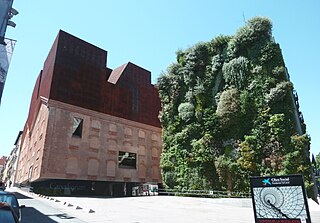
CaixaForum Madrid is a cultural center in Madrid, Spain. Located in Paseo del Prado in a former power station, it is owned by the not-for-profit banking foundation "la Caixa". The art center opened its doors in 2008 and it hosts temporary art exhibitions and cultural events.
Sight 15: Espacio Cultural Serrería Belga
The Serrería Belga is an old industrial building in Madrid, located between Calle de la Alameda, Calle Cenicero and Plaza de las Letras, in the Barrio de las Letras. It consisted of two warehouses – one for sawmills, the other for warehouses and dryers – and was owned by the company Sociedad Belga de los Pinares de El Paular, which built it in 1925 according to a project by the architect Manuel Álvarez Naya. The Serrería Belga maintained its activity until the end of the 1970s, and was acquired in 2000 by the Madrid City Council to use the building for cultural purposes. In 2007, he commissioned its rehabilitation and refurbishment by the architects María Langarita Sánchez and Víctor Navarro Ríos. The works were completed in 2013, when the building became the headquarters of Medialab-Prado.
Sight 16: Museo Nacional Centro de Arte Reina Sofía
The Museo Nacional Centro de Arte Reina Sofía is Spain's national museum of 20th-century art. The museum was officially inaugurated on September 10, 1992, and is named for Queen Sofía. It is located in Madrid, near the Atocha train and metro stations, at the southern end of the so-called Golden Triangle of Art.
Wikipedia: Museo Nacional Centro de Arte Reina Sofía (EN), Website
Sight 17: King's Monasterio de Santa Isabel
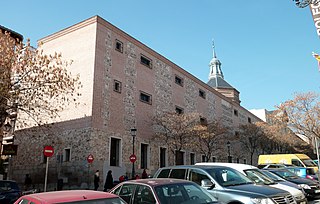
The Royal Monastery of Santa Isabel is a monastery located in Madrid, Spain. It was declared Bien de Interés Cultural in 1995.
Sight 18: Iglesia de San Lorenzo
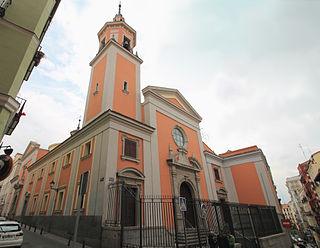
The Church of San Lorenzo is a Catholic church in the Spanish city of Madrid, located at 2 Calle del Doctor Piga, in the Lavapiés neighborhood. It is the center of the celebrations of the verbena de San Lorenzo in the neighborhood.
Sight 19: El Teatro del Barrio
The Teatro del Barrio is a Spanish cultural and theatrical space located in the Lavapiés neighborhood of Madrid. It was inaugurated in December 2013 and is characterized by being an artistic, political and cultural platform. Its focus is on the use of theatre as a tool for social transformation and on citizen participation in contemporary cultural and political changes. In September 2024, he was awarded the National Theater Award, in recognition of his work on the cultural scene and his social commitment.
Sight 20: Teatro Valle-Inclán
The Teatro Valle-Inclán is a theatre in Madrid, Spain. Together with Teatro María Guerrero, it is the home of the Spanish Centro Dramático Nacional. It is located at plaza de Lavapiés, in the city centre, and opened in February 2006.
Sight 21: Sala Mirador
The Sala Mirador was the first permanent centre in Madrid dedicated to puppet theatre, created by Carmen Heymann and Servando Carballar in 1984. Originally coordinated by the collective La Linterna Mágica, it merged space with the School of Interpretation created in 1979 by Cristina Rota, the germ of the later Center for New Creators, a pedagogical project that relaunched the name of the room within the theatrical field.
Sight 22: Circo Price
The Circo Price, also known as El Price, is a 2,142-seat concert venue and former circus in Madrid.
Sight 23: La Casa Encendida
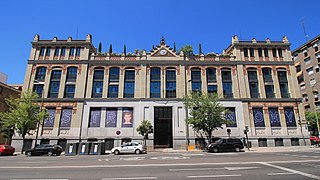
La Casa Encendida is a social and cultural centre in central Madrid. It began operations in December 2002.
Share
How likely are you to recommend us?
Disclaimer Please be aware of your surroundings and do not enter private property. We are not liable for any damages that occur during the tours.
GPX-Download For navigation apps and GPS devices you can download the tour as a GPX file.
